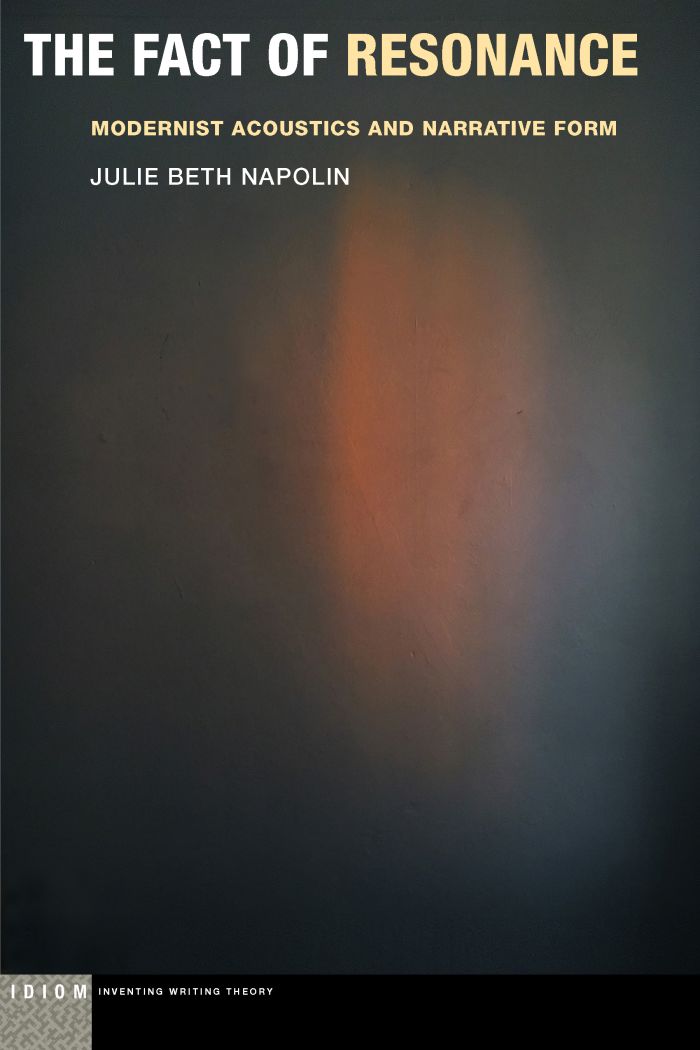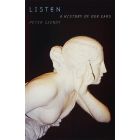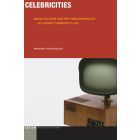The Fact of Resonance
Modernist Acoustics and Narrative Form

This book can be opened with

Shortlisted, 2021 Memory Studies Association First Book Award
The Fact of Resonance returns to the colonial and technological contexts in which theories of the novel developed, seeking in sound an alternative premise for theorizing modernist narrative form. Arguing that narrative theory has been founded on an exclusion of sound, the book poses a missing counterpart to modernism’s question “who speaks?” in the hidden acoustical questions “who hears?” and “who listens?”
For Napolin, the experience of reading is undergirded by the sonic. The book captures and enhances literature’s ambient sounds, sounds that are clues to heterogeneous experiences secreted within the acoustical unconscious of texts. The book invents an oblique ear, a subtle and lyrical prose style attuned to picking up sounds no longer hearable. “Resonance” opens upon a new genealogy of modernism, tracking from Joseph Conrad to his interlocutors—Sigmund Freud, Frantz Fanon, W. E. B. Du Bois, William Faulkner, and Chantal Akerman—the racialized, gendered, and colonial implications of acoustical figures that “drift” through and are transformed by narrative worlds in writing, film, and music.
A major synthesis of resources gleaned from across the theoretical humanities, the book argues for “resonance” as the traversal of acoustical figures across the spaces of colonial and technological modernity, figures registering and transmitting transformations of “voice” and “sound” across languages, culture, and modalities of hearing. We have not yet sufficiently attended to relays between sound, narrative, and the unconscious that are crucial to the ideological entailments and figural strategies of transnational, transatlantic, and transpacific modernism. The breadth of the book’s engagements will make it of interest not only to students and scholars of modernist fiction and sound studies, but to anyone interested in contemporary critical theory.
With meticulous attention to the aesthetics and politics of voice, sound, reading, listening, and the representation of others, Julie Beth Napolin offers an ear-opening set of resonances, restoring to the texts in question an audiovisual multiplicity entangled with race and ethnicity. This book is destined to reboot our reception of classics by Conrad, Du Bois, Fanon, Faulkner, and others. An admirably ambitious and nuanced study.—Rey Chow, co-editor of Sound Objects
This is a remarkable book, a truly interdisciplinary effort that brings the study of sound to bear on the very nature of narrative and the phenomenology of reading. Using a twinned approach to sound—both as acoustics and as sound-figures—allows Napolin to produce a wholly original set of engagements with the politics of colonialism, race, affect, and subjectivity in the modernist novel.—Brian Kane, Yale University
In a moment when the voices of the oppressed are ringing out across the world, Julie Beth Napolin’s The Fact of Resonance brings us toward the literary beginnings of modernism so that we can learn to listen for difference, which was never, contrary to some Fascist desires, completely contained.—Social Text
It is an exciting time to be a Conradian. At the same time that many of us are contending with well-intentioned but misplaced efforts to right literary discourse by eradicating Conrad from the canon, recent works of criticism are broadening the scope of investigation into his works and allowing us to rethink his writing in radically new ways. Such critical work is important; it confirms the author’s place in academic discussion and provides new avenues of research that attest to his continuing importance in the future. Julie Beth Napolin’s The Fact of Resonance is a welcome contribution to this enterprise. It allows us to see beyond the abstractions of narrative voice and to hear, feel and experience Conrad’s writing anew.—Joseph Conrad Today
What happens to us, as readers, when a scholarly monograph’s organizing principle is not progression or demonstration, but resonance? If we are lucky, we experience a theoretical acoustics that pairs ostensibly disparate ideas without hierarchizing them, indeed that contests the hierarchies implied by principles of causality, linearity, and teleology. With Julie Beth Napolin’s The Fact of Resonance, we are lucky... After finishing Napolin’s monograph, I opened another book, and I found myself listening differently.—Jean-Thomas Tremblay, Modernism/Modernity
...should guide the vocabulary of scholarship on literature and sound for years to come.—Novel: A Forum on Fiction
Note on Abbreviations | ix
Overture: The Sound of a Novel | 1
1 Voice at the Threshold of the Audible: Free Indirect Discourse
and the Colonial Space of Reading | 13
Coda: Chantal Akerman and Lip Sync as Postcolonial Strategy | 59
2 The Echo of the Object: On the Pain of Self-Hearing in The Nigger
of the “Narcissus” and “The Fact of Blackness” | 67
Coda: Literary History as Miscegenating Sound: The Sound and the Fury | 103
Intersonority: Unclaimed Voices Circum-1900, or Sound and Sourcelessness
in The Souls of Black Folk | 115
3 A Sinister Resonance: On the Extraction of Sound and Language
in Heart of Darkness | 149
Reprise: Reverberation, Circumambience, and Form-Seeking Sound
(Absalom, Absalom!) | 211
Acknowledgments | 231
Notes | 235
Bibliography | 309
Index | 331




